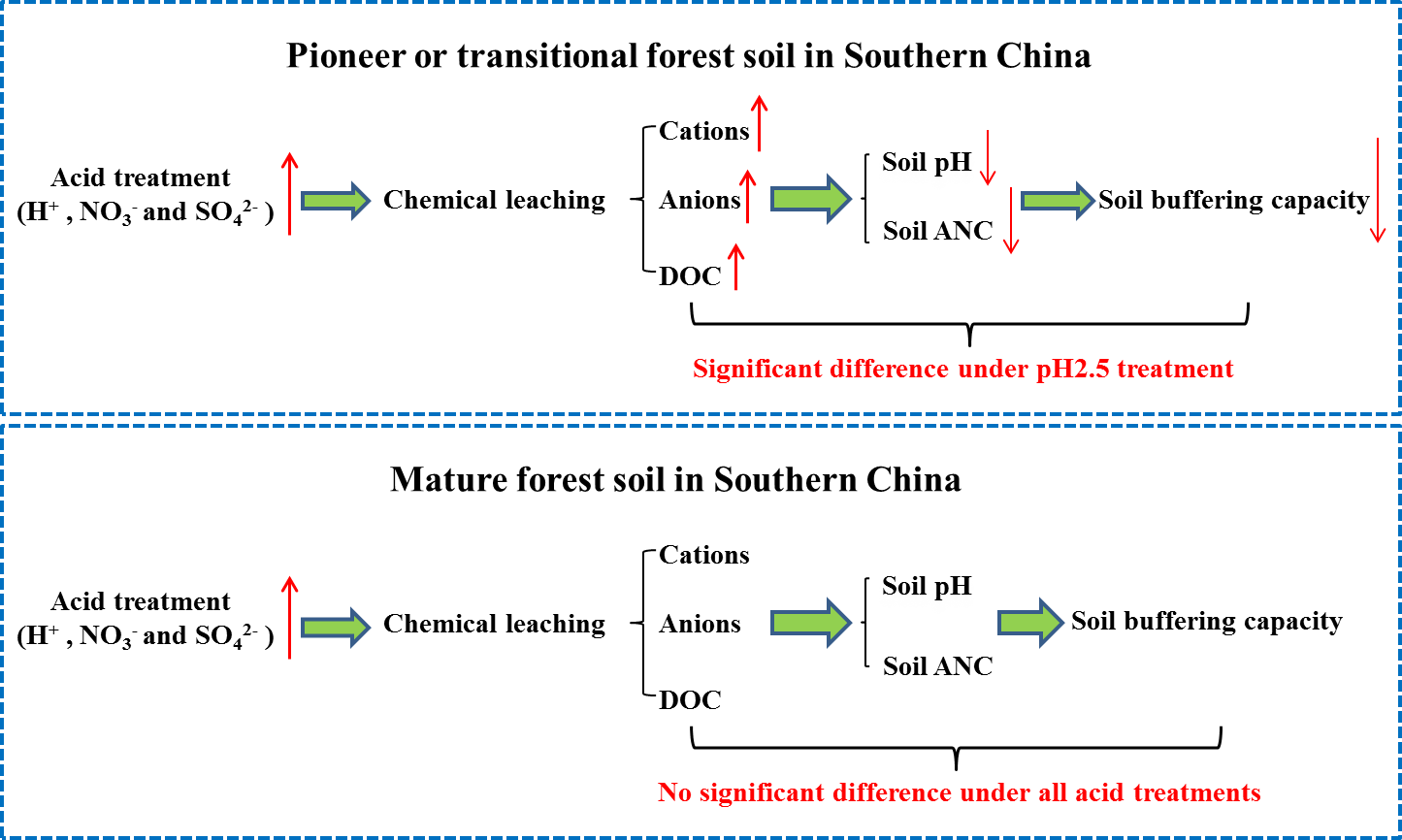Elevated anthropogenic acid deposition can significantly affect forest ecosystem functioning by changing soil pH, nutrient balance, and chemical leaching and so on. These effects generally differ among different forests, and the mechanisms for those observed responses often vary, depending on climate, soil conditions and vegetation types. However, the responses of soil buffering capacity to acid deposition and the dominant mechanisms still remain unclear in southern China.
Using soil monoliths from pine forest (pioneer), coniferous and broadleaved mixed forest (transitional) and broadleaved forest (mature) in southern China, Jun Jiang, a PhD student directed by Professor Junhua Yan, conducted a leaching experiment with acid treatments at different pH levels (control: pH ≈ 4.5; pH = 3.5; pH = 2.5) to investigate the buffering capacities of different forest soils and further explore the possible mechanisms.
The research results showed that pH 3.5 treatment significantly reduced dissolved organic carbon (DOC) concentrations in leachate from the pioneer forest soil. pH 2.5 treatment significantly increased concentrations of NO3-, SO42-, Ca2+, Mg2+, Al3+, Fe3+ and DOC in leachate from the pioneer forest soil, and also concentrations of NO3-, SO42-, Mg2+, Al3+, Fe3+ and DOC in leachate from the transitional forest soil. All acid treatments had no significant effects on concentrations of these chemicals in leachate from the mature forest soil. The responses can be explained by the changes in soil pH, acid neutralizing capacity (ANC) and concentrations of Al and Fe. Therefore acid buffering capacity of the pioneer or transitional forest soil was lower than that of the mature forest soil. Preserving mature forests in southern China is important for reducing the adverse impacts of high acid deposition on stream water quality at present and into the future.
These research results have been written a paper, which was entitled as “Responses of soil buffering capacity to acid treatment in three typical subtropical forests” and published in Science of the Total Environment (http://dx.doi.org/10.1016/j.scitotenv.2016.04.198).
This study was supported by the Natural Science Foundation of China (31270557) and the CAS/SAFEA International Partnership Program for Creative Research Teams.

Graphical abstract
